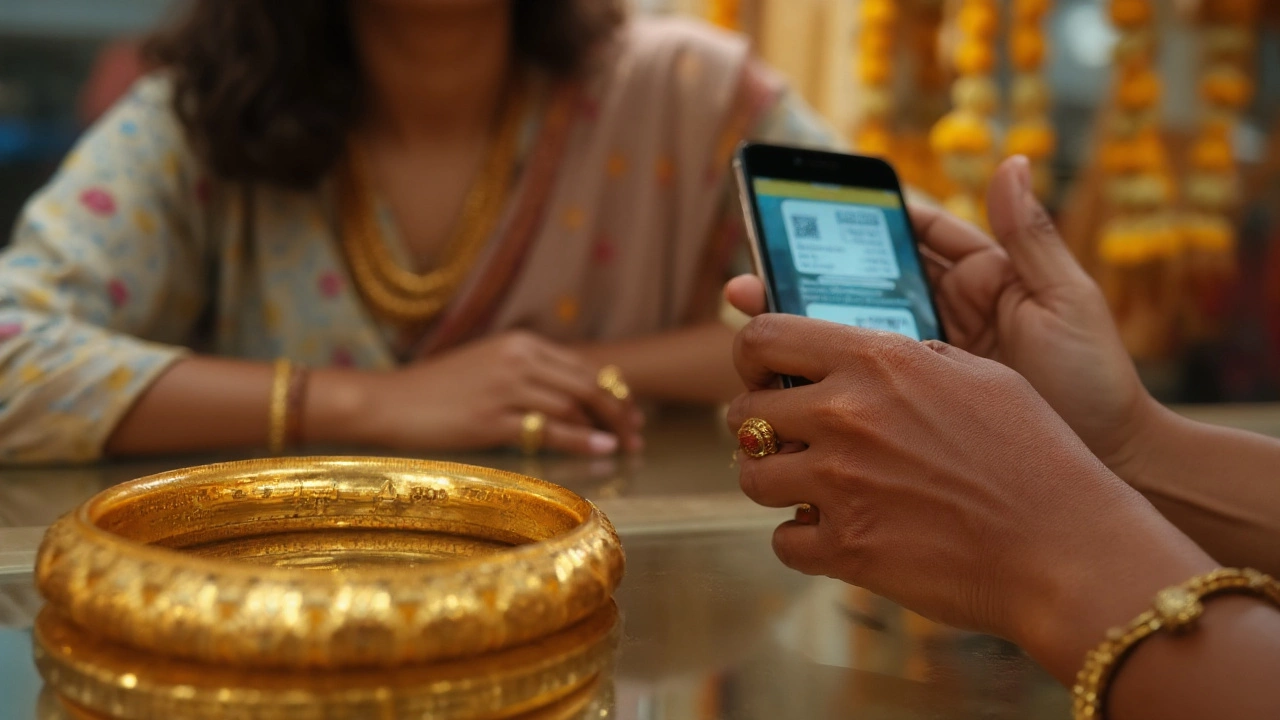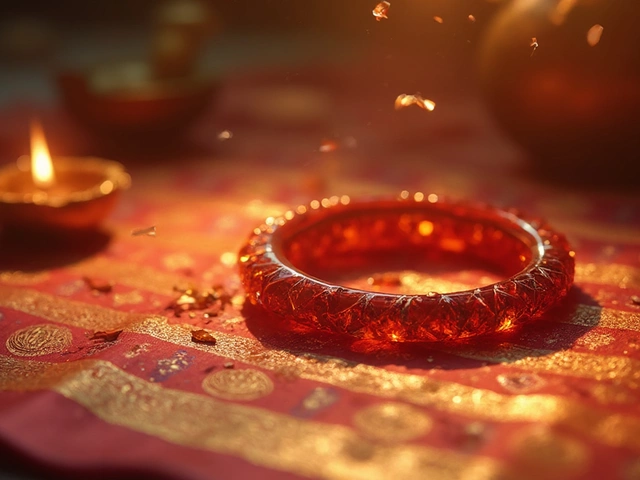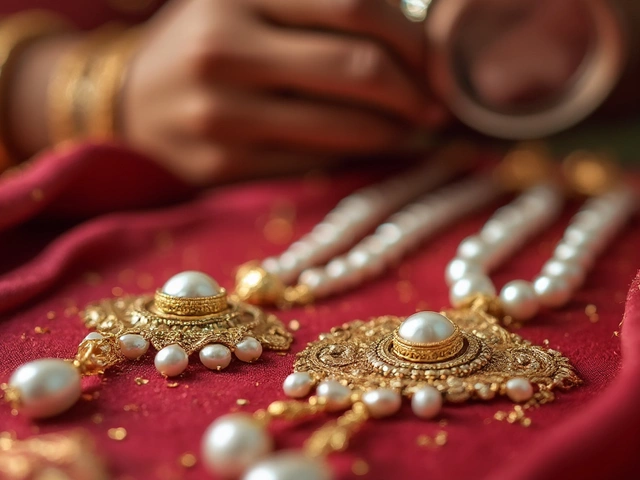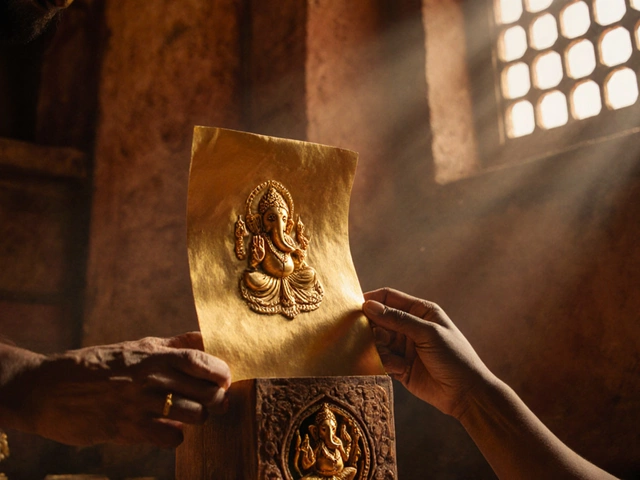If you’ve spotted “875” on a gold bangle or ring and wondered what it means, here’s the short answer: it marks purity-87.5% gold, also called 21 karat. Simple idea, big consequences. It affects price, durability, buyback value, and whether a jeweller in India will even accept it. If you searched for 875 gold meaning, this guide gives you clear decoding, verification steps, a price formula, and the traps to avoid.
- 875 = 87.5% pure gold = 21 karat (21K).
- In India, BIS hallmarking doesn’t currently certify 21K; common BIS grades are 14K (585), 18K (750), 20K (833), 22K (916), 23K (958), 24K (999/995).
- 875 can also be a silver fineness (common in Russian/Soviet silver). Verify the metal before paying gold rates.
- Price thumb rule: Value ≈ (24K market rate per gram × 0.875 × net weight) + making + GST. For resale, expect melt-value based offers and lower acceptance in India.
- Always check BIS HUID on the BIS Care app. If the piece is imported or old without BIS marks, get an XRF test before buying.
What 875 Means on Gold (and where you’ll see it)
875 is a fineness mark. It means the item is 87.5% pure gold and 12.5% other metals (alloys) such as copper, silver, zinc, or a mix. That purity corresponds exactly to 21 karat: 0.875 × 24 = 21K.
Where it shows up:
- Middle East and parts of Southeast Asia: 21K jewellery is common, especially in the UAE and Saudi Arabia. You’ll often see 875 alongside “21K.”
- India: 21K isn’t a standard BIS hallmarked grade as of 2025. You might see 875 on imported pieces, older jewellery, or non-BIS items.
- Europe: Less common as a gold mark. The UK, for example, typically uses 375 (9K), 585 (14K), 750 (18K), 916 (22K).
An important twist: 875 is also a known fineness for silver (notably in Russian/Soviet silver, often accompanied by specific national symbols). So if you only see “875” with no clear “K” or gold color-and especially if the item looks white/grey-don’t assume it’s gold. Verify.
In India, BIS hallmarking (the Bureau of Indian Standards quality mark) is your trust anchor. Since 2023, BIS requires a HUID (Hallmark Unique ID) on hallmarked gold jewellery. Current BIS-certified caratages are 14K (585), 18K (750), 20K (833), 22K (916), 23K (958), and 24K (995/999). 21K (875) isn’t on that list. That’s why many Indian jewellers hesitate to buy or resell 875 items unless they melt and assay them.
Standards and references you can count on: BIS Hallmarking of Gold Jewellery and Gold Artefacts Order (2020), BIS IS 1417:2016 (Fineness and Marking of Gold and Gold Alloys), and BIS IS 15820 (Assaying & Hallmarking Centre requirements). These outline what purity marks are acceptable and how hallmarking is done.
How to verify an 875 mark step by step (India-focused)
When I see 875 stamped on a piece in Mumbai, I don’t guess-I verify. Here’s a clean, repeatable process you can use.
- Look for the full hallmark set. On newer Indian pieces, you should see: BIS logo + purity (e.g., 916/750/585 etc.) + HUID (6-digit alphanumeric). For 875, you likely won’t see a BIS mark because 21K isn’t standard; if you do, be cautious-verify on the BIS Care app.
- Check the HUID on the BIS Care app. If a HUID is present, scan or type it into the BIS Care app (Android/iOS). The app should show the jeweller, purity, and product details. If the record doesn’t match, walk away.
- Look for a clear “21K” or “K21” tag. If it says “875” and “21K,” that points to gold. If it’s only “875” with no “K,” don’t assume-keep testing.
- Visual and magnet check. Gold is non-magnetic. A magnet won’t prove it’s gold, but if it sticks, it’s a red flag. Also check color consistency in hidden spots (inside band, under clasp). Plating rub-off or color mismatch is a warning sign.
- Density check (if you can). Gold’s density is ~19.3 g/cc (24K). 21K alloy will be slightly less dense but still heavy for its size. Lightweight for size is suspicious.
- XRF test at a reputed jeweller. Ask for an XRF (X-ray fluorescence) non-destructive test. It shows the composition in seconds-gold percentage and alloy metals. Keep the printed report. In India, large chain stores and hallmarking centres usually offer it.
- Acid testing (only with pros). Nitric acid tests can damage the piece and are risky. If you must, let a professional do it. Prefer XRF first.
- Invoice details. For new purchases, insist the invoice states purity (karat/fineness), net weight, stone weight, and making charges separately. If it’s listed as 21K/875 but has no BIS hallmark, ask the seller why and get written assurance of purity and buyback terms.
Quick India-specific hint: if you’re paying Indian retail rates and the seller can’t provide HUID for a supposed BIS-hallmarked item, don’t complete the purchase. BIS hallmarking is mandatory in most of the country, and the HUID is your first filter against fraud.

Value, durability and comparisons: 875 vs 916 vs 750
Purity tells you two big things: how much gold you’re actually buying and how that piece will wear over time.
Use this price logic when you’re estimating value:
- Melt value (base): 24K market rate per gram × purity factor × net gold weight.
- Retail purchase price: Melt value + making/wastage charges + GST (3% in India).
- Resale to jeweller: Usually close to melt value minus testing/handling deductions. Making charges are typically not recovered.
Example (illustrative only): assume the 24K rate today is ₹7,200/g, your chain is 21K/875, net weight 15 g, no stones.
- Melt value ≈ ₹7,200 × 0.875 × 15 = ₹94,500.
- If making charges are 12%, that’s ≈ ₹11,340. Subtotal ≈ ₹105,840.
- GST 3% on subtotal ≈ ₹3,175. Indicative retail ≈ ₹109,015.
- Resale: expect an offer around melt (₹94,500), minus any assay fees or small deductions. Some Indian jewellers may quote slightly less for 21K because it’s non-standard in BIS; they might melt and re-alloy it.
Here’s how 875 stacks up against popular purities on wearability and market acceptance:
| Fineness | Karat | Common in India? | Typical Use | Durability (daily wear) | Buyback Acceptance (India) |
|---|---|---|---|---|---|
| 999/995 | 24K | Yes (bars/coins) | Coins, bars | Too soft for jewellery | High (bullion) |
| 958 | 23K | Yes (BIS) | High-purity jewellery, wedding pieces | Soft; careful wear | Good |
| 916 | 22K | Yes (BIS) | Necklaces, bangles, traditional sets | Moderate-soft; common for India | Very good |
| 875 | 21K | No (not a BIS grade) | Imported/Middle East jewellery | Between 22K and 18K | Varies; often melted and assayed |
| 833 | 20K | Yes (BIS) | Jewellery needing a bit more hardness | Better than 22K | Good |
| 750 | 18K | Yes (BIS) | Diamond/stone-studded jewellery | Good for daily wear | Very good |
| 585 | 14K | Yes (BIS) | Modern designs, durable pieces | High durability | Very good |
What this means in real life:
- Daily wear: 21K (875) is softer than 18K (750) but slightly harder than 22K (916). For rings and bracelets that take hits, 18K often holds shape better. For necklaces and bangles worn occasionally, 21K is fine.
- Stone settings: Jewelers prefer 18K for prongs/claws because it’s stronger. 21K prongs can bend more easily.
- Color: Higher karat looks richer and warmer. 21K usually has a deep yellow tone, just shy of 22K.
- Resale in India: BIS-standard grades get smoother buyback. 21K may face extra testing, and quotes can be conservative if the store doesn’t deal with 21K often.
Key pitfall: Don’t confuse “875” with a fixed resale premium. Purity increases the gold content value, but retail price swings a lot with making charges, brand markups, and design labour. Always break the quote into components (gold value vs making) to compare fairly.
Quick checks, pitfalls, and FAQs
Use this one-minute checklist when you see “875” on a piece:
- Does it also say “21K” or “K21”? Good sign for gold (but still verify).
- BIS hallmark present? If yes, check HUID on the BIS Care app. If the purity shown isn’t 875/21K, question the item.
- No BIS mark and only “875”? Treat as imported/non-standard-ask for an XRF test.
- Color consistent in hidden spots? Plating wear or two-tone patches are red flags.
- Invoice lists purity, net weight, making charges separately? If not, ask for it in writing.
Common pitfalls to avoid:
- Assuming 875 = gold by default. It can be silver. If it looks white/grey or bears non-India symbols, verify metal type.
- Paying gold jewellery prices without BIS or lab report. You lose leverage on resale if purity can’t be proven.
- Forgetting stone weight. Diamonds and gems add non-gold weight; make sure net gold weight is on the invoice. You should not pay gold rate on stone weight.
- Relying on magnet tests alone. Many fakes are non-magnetic. Magnet is just a quick filter, not proof.
- Ignoring making charges. A low gold rate can be offset by high making. Compare total out-the-door price.
Mini‑FAQ
- Is 875 real gold? Yes-if it’s gold, 875 means 87.5% gold (21K). But the same number is also used for silver fineness in some countries, so verify metal type.
- Is 21K/875 hallmarked by BIS in India? As of 2025, BIS hallmarking covers 14K, 18K, 20K, 22K, 23K, and 24K. 21K isn’t a BIS-marked grade. You may still find 21K on imported jewellery, but it won’t carry a valid BIS purity mark.
- What’s stronger for daily wear-21K or 18K? 18K is generally tougher for prongs and rings. 21K is fine for pendants, chains, and occasional-wear bangles.
- Can I sell 875 gold easily in India? Yes, but many jewellers will melt-and-assay and quote near melt value. Expect lower acceptance versus 22K/18K BIS pieces.
- How do I calculate 875 gold price? Price ≈ (24K rate/g × 0.875 × net gold weight) + making + 3% GST. For resale, expect close to (24K rate/g × 0.875 × net weight) minus fees.
- Why does some 875 jewellery look white? It might be silver (875) or white gold rhodium-plated. Only an XRF test or proper hallmark verification settles it.
- What standards back these markings? BIS IS 1417:2016 covers fineness and marking for gold alloys; BIS hallmarking is regulated by the 2020 Hallmarking Order; assaying centres follow IS 15820.
Next steps and quick troubleshooting
- I found an 875 ring in a family trunk. Get it weighed and XRF-tested at a reputed jeweller. If it’s 21K gold, ask for a written assay report; decide whether to keep, redesign, or sell at melt value.
- Buying 875 abroad (e.g., Dubai) to bring to India. Keep the purchase invoice with purity and weight. On return, declare if required under customs rules. For future resale in India, expect melt-based quotes since 21K isn’t a BIS grade.
- My piece says 875 and sticks to a magnet. Likely not gold. Walk away or treat it as costume jewellery until proven otherwise.
- Seller refuses XRF and claims BIS isn’t required. In India, that’s a red flag for new jewellery. Without HUID or an independent assay, don’t buy.
- I want durability but love rich color. Consider 20K (833) or 18K (750). You’ll get better strength and broad BIS acceptance while keeping a warm hue.
If you want the safest path in India: choose BIS-hallmarked 22K for traditional pieces and 18K for stone-studded or daily-wear rings. If you’re set on 21K/875, verify with XRF and buy with clear paperwork, knowing resale may be melt-based.



